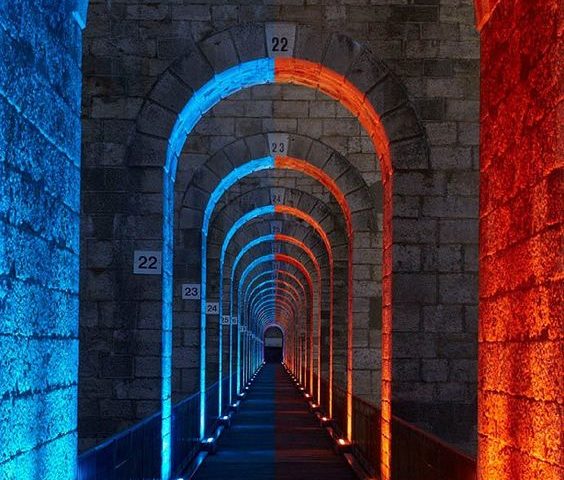
Mathematical high rise – Digital technology takes architecture skywards
September 2, 2020
Creative ideas for LED lighting strips
September 21, 2020Accent lighting is a creative way to add visual appeal to your home. Of the many ways you can implement accent lighting, wall washing—or covering a wall in light—is a particularly interesting technique. Wall washing is used to make rooms feel larger while calling attention to artwork or architectural features. But though we’ve already discussed wall washing in previous articles, we have yet to introduce a similar, yet unique accent lighting technique: wall grazing. Let’s review the differences between the two.
Wall Washing:
Wall washing is when light is uniformly spread out over a wall from top to bottom. Evenly illuminating the entire wall hides imperfections and eliminates shadows. As a result, the wall appears clear and bright, any architecture is emphasized, and the room as a whole looks more spacious. Wall washing is best used on walls with a smooth, flat surface to limit shadowing.
To create a wall washing effect, lights need to be mounted at or above ceiling height, so they can effectively “wash” up to 8 or 9 feet of vertical space. They also need to be situated far enough away from the wall that the light can spread out at a wider beam angle, usually about 2 to 3 feet. The light should be angled at eye-level or towards the center of the feature or artwork you want to highlight. We recommend using multi-directional fixtures such as track lights or eye-ball can lights for wall washing.
Wall Grazing:
Wall grazing, on the other hand, is intended for the opposite effect: to accentuate textured vertical surfaces by exaggerating shadows. Shining light just over the top of stone or textured surfaces, wall grazing creates pronounced shadows to give walls a more dramatic look. If these surfaces were illuminated using a wall washing technique, they would appear flattened and “washed out”—hardly the look you want for the limestone exterior of your home, for example.
Wall grazing can be executed similarly to wall washing, except the lights should be located closer to the wall. The lights can even be mounted on the ground shining towards the ceiling (or sky, if used for outdoor lighting) for an alluring uplighting effect. This technique is also often used to light carvings or statues. In any case, shadows can be made more or less pronounced by moving the lights closer or farther away from the wall. Typically, you can use the same fixtures for wall grazing as for wall washing; however, landscape bullets are highly recommended for outdoor lighting.
Summary:
Unlike wall washing, which highlights features on the wall, wall grazing turns the wall itself into the focal point of the room. Wall washing lights walls at a wider angle to create a clear, bright wall and highlight anything showcased on it, whereas wall grazing skims the surface of the wall at a narrow angle to accentuate the beauty of rough or interesting textures through shadows. Both techniques call attention to walls and are a unique way of manipulating how certain spaces or surfaces appear to the human eye.
Article courtsey: Jessica Banke https://blog.1000bulbs.com/home/wall-washing-vs-wall-grazing

